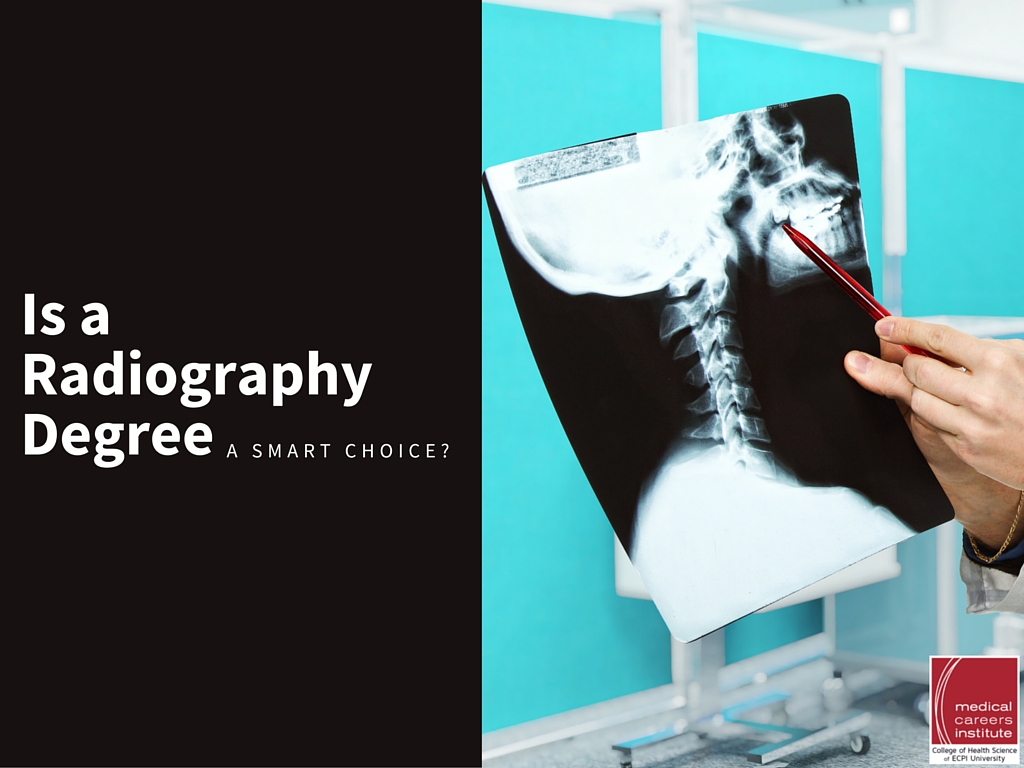
Is a Radiography Degree a Smart Choice?
Education is transformative. You enter a program as an uncertain, unskilled student ,and emerge some time later a graduate with skills and a mindset that help you for the rest of your life. Pursuing a degree in radiography is a great example of the power of a good education. In return for 18 months of hands-on learning, you could reap the rewards of a fulfilling future as a radiologic technologist, helping people while in comfortable working conditions.
The History of Radiology
Ever since we as a society stopped slapping mustard seed on our every ailment (yes, that really was a thing), radiologic technologists have been operating diagnostic imaging equipment to help doctors diagnose patients. This equipment includes X-ray machines, dual-energy x-ray absorptiometry (DXA) equipment and computed tomography (CT) scanners. Most radiologic technologists do not work with radioactive materials; the word “radiologic” refers to energy—X-rays and light energy—that radiates, or spreads, outward. The word "Radiohead” refers to an English rock band, just to be clear.
Radiologic technologists operate and maintain the imaging equipment. They interact with patients, helping to calm jittery nerves and provide professional, caring attention during stressful moments. Some technologists specialize in mammography; others specialize in operating magnetic resonance imaging (MRI) machines.
Because the work is highly technical, radiologic technologists have to possess sharp minds for facts, figures and challenges. Yet a good technologist never forgets the machines are in service to people as they face life-changing diagnoses. A successful radiologic technologist is that rare person who can combine a scientific mind with a caring heart.
A Day in the Life of a Radiology Technician
A radiographer’s primary duties include adjusting medical imaging equipment, preparing patients for procedures, performing diagnostic imaging exams, and evaluating the output of the diagnostic. Protecting parts of patients’ bodies that aren’t being examined is a critical task where patient safety is concerned, so a radiologic technologist should follow doctor’s orders on imaging the patient’s body.
How to Become a Radiology Technician
We began by pointing out that education can transform you from an ambitious but unskilled person into a successful part of today’s medical professions. Becoming a radiologic technologist frees you from the drudgery of having to make jokes about bunions, and gets you on a possible path toward work in hospitals, outpatient care clinics, government facilities, or medical research. Contact ECPI University today to learn how the school’s coursework can get you an Associate of Applied Science degree in Medical Radiography in as little as 18 months. It could be the Best Decision You Ever Make!
DISCLAIMER – ECPI University makes no claim, warranty or guarantee as to actual employability or earning potential to current, past or future students or graduates of any educational program we offer. The ECPI University website is published for informational purposes only. Every effort is made to ensure the accuracy of information contained on the ECPI.edu domain; however, no warranty of accuracy is made. No contractual rights, either expressed or implied, are created by its content.
For more information about ECPI University or any of our programs click here: http://www.ecpi.edu/ or http://ow.ly/Ca1ya.


